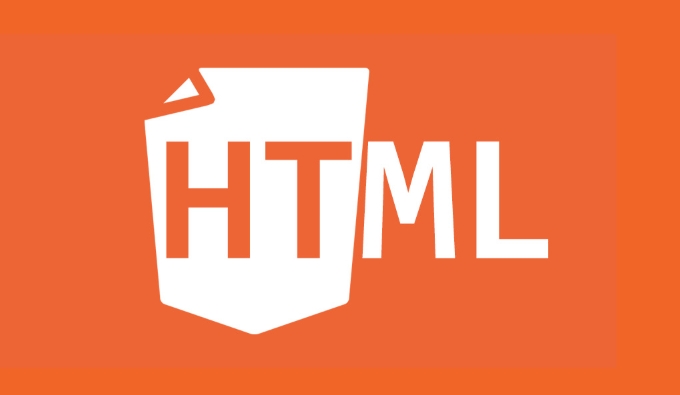Embedding Content from Other Sources Using the HTML iframe Tag
Jul 06, 2025 am 01:56 AMiframe is an inline framework used in HTML to embed external content, suitable for embedding third-party content such as maps, videos, and advertisements; 1. Pay attention to security, style adaptation and loading performance when using it; 2. The basic writing method is , which can set size, full-screen playback and other functions; 3. Optimization includes removing borders, realizing responsive layouts, and using lazy loading to improve performance; 4. In terms of security, sandbox and allow attributes should be used to limit iframe behavior to prevent potential attacks; mastering these key points can ensure that iframes are stable and securely integrated into the web page.

Let me directly talk about the key points: embedding external content with HTML <iframe></iframe> tags is actually quite simple, but if you want to use them well, you have to pay attention to several key points, such as security, style adaptation and loading performance.

What is an iframe? What is suitable for?
<iframe></iframe> means "inline frame", which can embed another web page in the current web page. Commonly used to embed maps, videos, advertisements, third-party gadgets and other content.

For example, if you see an embedded YouTube video on a web page, or displaying the location of Google Maps, many of them use iframes.
Its advantages are:

- No need to write your own code to achieve complex functions
- Content is maintained by a third party, which saves trouble
- Loading is independent and will not easily affect the performance of the main page (although there are exceptions)
Basic usage method
The most basic way to write is very simple:
<iframe src="https://example.com" width="100%" height="500"></iframe>
where src is the content address you want to embed, and width and height control the display area size.
You can set it as needed:
- Use percentage or fixed pixel values ??to control size
- Add
allowfullscreenattribute to allow full screen to play video - Set
allow="autoplay"to allow automatic playback (but this is often restricted by the browser)
It should be noted that some websites will prevent them from being embedded in iframes (such as some news websites), and you will see blanks or error messages at this time.
How to make iframes better integrate into the page?
The default iframe is a block-level element, but sometimes you will find that it is not very harmonious with the layout of the surrounding content, or it may interfere with the visual effects such as borders and scroll bars.
Common optimization methods include:
- Remove the default border : add
frameborder="0"or use CSS to setborder: none; - Responsive design : wrap an iframe with CSS so that it can adapt to different screen widths, for example:
<div style="position: relative; padding-bottom: 56.25%;"> <iframe src="..." style="position: absolute; width: 100%; height: 100%; border: none;"></iframe> </div>
This code will keep the iframe at a 16:9 ratio and it can be displayed normally on different devices.
- Consider loading performance : If the page has many iframes, it may slow down the overall loading speed. You can use lazy loading attribute
loading="lazy"to improve the experience:
<iframe src="..." loading="lazy"></iframe>
Don't ignore security issues
Although iframes are very convenient, they may also bring security risks, such as clickjacking attacks.
For more security, it is recommended to add the following attributes:
-
sandbox: Restrict the behavior of content in iframes, such as prohibiting pop-ups, script execution, etc. -
allowproperty: explicitly allows certain behaviors, such as camera access, full-screen playback, etc.
For example:
<iframe src="..." sandbox="allow-same-origin allow-scripts allow-popups"></iframe>
This not only ensures that the basic functions are available, but also avoids some potential risks.
Basically that's it. Embedding content with an iframe is not complicated, but it is easy to cause problems if the details are not done well. If you master these key points, you can use them more safely.
The above is the detailed content of Embedding Content from Other Sources Using the HTML iframe Tag. For more information, please follow other related articles on the PHP Chinese website!

Hot AI Tools

Undress AI Tool
Undress images for free

Undresser.AI Undress
AI-powered app for creating realistic nude photos

AI Clothes Remover
Online AI tool for removing clothes from photos.

Clothoff.io
AI clothes remover

Video Face Swap
Swap faces in any video effortlessly with our completely free AI face swap tool!

Hot Article

Hot Tools

Notepad++7.3.1
Easy-to-use and free code editor

SublimeText3 Chinese version
Chinese version, very easy to use

Zend Studio 13.0.1
Powerful PHP integrated development environment

Dreamweaver CS6
Visual web development tools

SublimeText3 Mac version
God-level code editing software (SublimeText3)

Hot Topics
 How do I embed PHP code in an HTML file?
Jun 22, 2025 am 01:00 AM
How do I embed PHP code in an HTML file?
Jun 22, 2025 am 01:00 AM
You can embed PHP code into HTML files, but make sure that the file has an extension of .php so that the server can parse it correctly. Use standard tags to wrap PHP code, insert dynamic content anywhere in HTML. In addition, you can switch PHP and HTML multiple times in the same file to realize dynamic functions such as conditional rendering. Be sure to pay attention to the server configuration and syntax correctness to avoid problems caused by short labels, quotation mark errors or omitted end labels.
 How do I embed video in HTML using the element?
Jun 20, 2025 am 10:09 AM
How do I embed video in HTML using the element?
Jun 20, 2025 am 10:09 AM
To embed videos in HTML, use tags and specify the video source and attributes. 1. Use src attributes or elements to define the video path and format; 2. Add basic attributes such as controls, width, height; 3. To be compatible with different browsers, you can list MP4, WebM, Ogg and other formats; 4. Use controls, autoplay, muted, loop, preload and other attributes to control the playback behavior; 5. Use CSS to realize responsive layout to ensure that it is adapted to different screens. Correct combination of structure and attributes can ensure good display and functional support of the video.
 How do I minimize the size of HTML files?
Jun 24, 2025 am 12:53 AM
How do I minimize the size of HTML files?
Jun 24, 2025 am 12:53 AM
To reduce the size of HTML files, you need to clean up redundant code, compress content, and optimize structure. 1. Delete unused tags, comments and extra blanks to reduce volume; 2. Move inline CSS and JavaScript to external files and merge multiple scripts or style blocks; 3. Simplify label syntax without affecting parsing, such as omitting optional closed tags or using short attributes; 4. After cleaning, enable server-side compression technologies such as Gzip or Brotli to further reduce the transmission volume. These steps can significantly improve page loading performance without sacrificing functionality.
 How has HTML evolved over time, and what are the key milestones in its history?
Jun 24, 2025 am 12:54 AM
How has HTML evolved over time, and what are the key milestones in its history?
Jun 24, 2025 am 12:54 AM
HTMLhasevolvedsignificantlysinceitscreationtomeetthegrowingdemandsofwebdevelopersandusers.Initiallyasimplemarkuplanguageforsharingdocuments,ithasundergonemajorupdates,includingHTML2.0,whichintroducedforms;HTML3.x,whichaddedvisualenhancementsandlayout
 How do I use the element to represent the footer of a document or section?
Jun 25, 2025 am 12:57 AM
How do I use the element to represent the footer of a document or section?
Jun 25, 2025 am 12:57 AM
It is a semantic tag used in HTML5 to define the bottom of the page or content block, usually including copyright information, contact information or navigation links; it can be placed at the bottom of the page or nested in, etc. tags as the end of the block; when using it, you should pay attention to avoid repeated abuse and irrelevant content.
 What is the declaration, and what does it do?
Jun 24, 2025 am 12:57 AM
What is the declaration, and what does it do?
Jun 24, 2025 am 12:57 AM
Adeclarationisaformalstatementthatsomethingistrue,official,orrequired,usedtoclearlydefineorannounceanintent,fact,orrule.Itplaysakeyroleinprogrammingbydefiningvariablesandfunctions,inlegalcontextsbyreportingfactsunderoath,andindailylifebymakingintenti
 How do I use the tabindex attribute to control the tab order of elements?
Jun 24, 2025 am 12:56 AM
How do I use the tabindex attribute to control the tab order of elements?
Jun 24, 2025 am 12:56 AM
ThetabindexattributecontrolshowelementsreceivefocusviatheTabkey,withthreemainvalues:tabindex="0"addsanelementtothenaturaltaborder,tabindex="-1"allowsprogrammaticfocusonly,andtabindex="n"(positivenumber)setsacustomtabbing
 What is the purpose of the input type='range'?
Jun 23, 2025 am 12:17 AM
What is the purpose of the input type='range'?
Jun 23, 2025 am 12:17 AM
inputtype="range" is used to create a slider control, allowing the user to select a value from a predefined range. 1. It is mainly suitable for scenes where values ??need to be selected intuitively, such as adjusting volume, brightness or scoring systems; 2. The basic structure includes min, max and step attributes, which set the minimum value, maximum value and step size respectively; 3. This value can be obtained and used in real time through JavaScript to improve the interactive experience; 4. It is recommended to display the current value and pay attention to accessibility and browser compatibility issues when using it.






